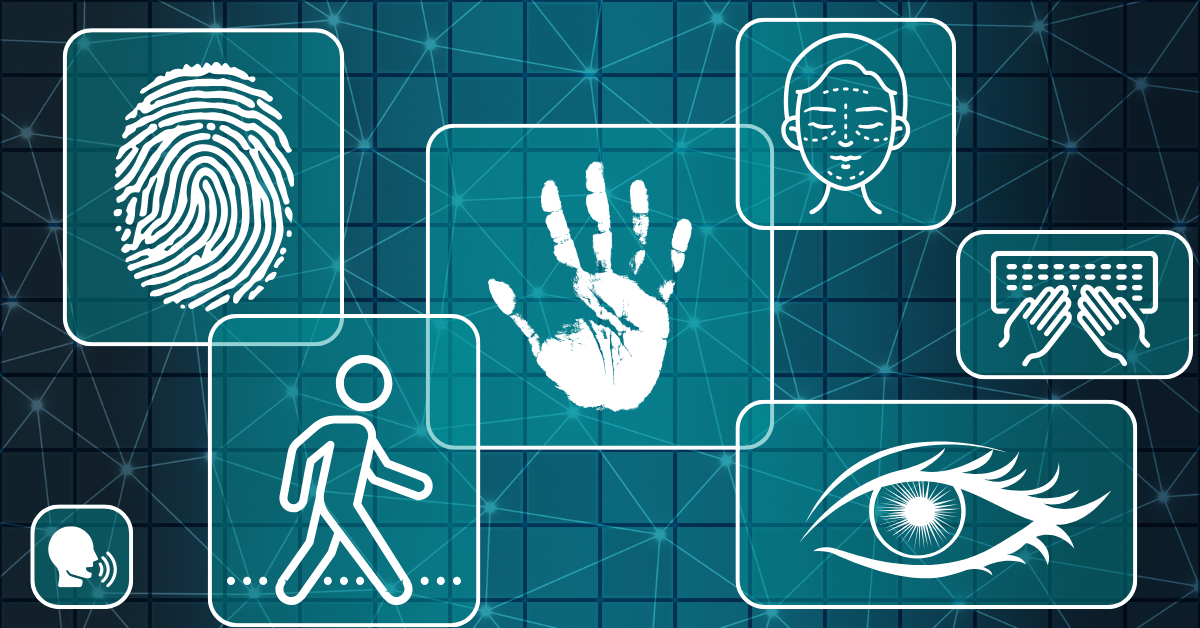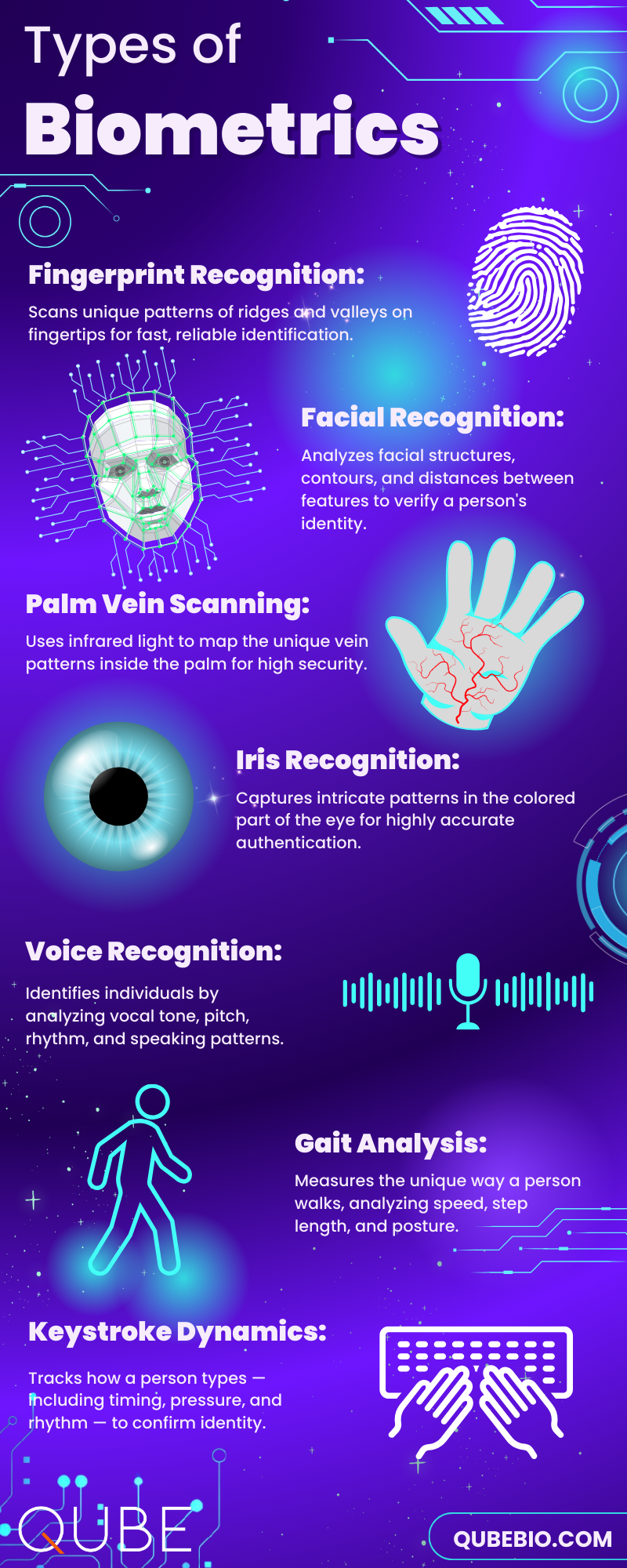Categories
In an increasingly digital world, securing identity verification processes is more critical than ever. Multi-modal biometrics—the use of two or more biometric identifiers like fingerprints, facial scans, and palm vein patterns—represents the next evolution in authentication technology.
At Qube Bio, we are at the forefront of providing cutting-edge biometric devices designed to meet the demands of modern security without compromising user experience. In this article, we explore what biometrics are, the benefits of multi-modal systems, and their growing impact across industries.

Biometrics refer to the measurement and statistical analysis of people’s unique physical and behavioral characteristics. This technology leverages attributes such as fingerprints, facial features, voice patterns, and even vein structures to verify identity accurately and securely.
Biometric systems work by capturing a sample of the trait (like a fingerprint), converting it into a digital format, and comparing it against stored data to verify identity. This field is growing rapidly, with the global biometrics market expected to reach $136.18 billion by 2031 (source: Allied Market Research).
Biometrics offer a major advantage over traditional security methods such as passwords or PINs, which can be forgotten, guessed, or stolen. Instead, biometric identifiers are inherently tied to an individual, providing a higher level of trust and security.
Biometrics refer to the measurement and analysis of unique physical or behavioral characteristics to authenticate individuals. Unlike traditional methods like passwords or PINs, biometrics are inherently tied to a person, making them difficult to replicate or steal. Biometric technologies can be divided into two primary types: physiological (based on physical attributes) and behavioral (based on actions).
Fingerprint recognition analyzes the unique patterns of ridges and valleys on an individual’s fingertips. It remains one of the oldest and most widely used biometric techniques due to its high reliability and low cost.
Facial recognition uses unique features of a person’s face—such as the distance between the eyes, nose shape, and jawline—for identity verification. Modern algorithms can authenticate users in real-time, even when slight changes occur in appearance.
Palm vein scanning captures the unique vein pattern beneath the skin using near-infrared light. Because veins are internal, remain stable and nearly impossible to replicate externally, this method is highly secure and contactless.
Iris recognition focuses on the complex patterns within the colored part of the eye. It offers extremely high accuracy; false acceptance rates can be as low as 1 in 1.2 million.
Voice recognition examines vocal characteristics such as tone, pitch, and speech patterns. It is often used for remote authentication, including telephone banking and virtual assistants.
Gait analysis measures the unique way a person walks. Because walking patterns are difficult to mimic and don’t require direct contact with a sensor, gait biometrics are increasingly used for unobtrusive surveillance and access control in secure facilities.
Keystroke dynamics identify users based on their typing patterns, such as speed, rhythm, and pressure. It’s a behavioral biometric often employed in cybersecurity applications to continuously monitor identity during computer sessions.

Multi-modal biometrics combine two or more of the above identifiers into a single verification process. For instance, a system may require both a fingerprint and facial scan before granting access.
By combining multiple modalities, these systems dramatically increase authentication accuracy, reduce error rates, and make it much harder for fraudsters to spoof identity credentials.
Multi-modal systems also offer flexibility; if one modality is temporarily unavailable (e.g., a finger injury), another can still verify the user.
Multi-modal systems have a number of advantages such as:
The biometric market is evolving, with four trends shaping its future:
Many systems now combine facial recognition with fingerprint and iris scanning to speed up processing while tightening security. For example, the U.S. Customs and Border Protection (CBP) uses such methods in its Global Entry program.
Banks around the world are deploying multi-modal systems to secure mobile apps and ATMs. Fingerprint and facial recognition help ensure that only the legitimate account holder can initiate transactions, reducing fraud risks significantly.
Retailers are experimenting with biometric payment systems where a shopper’s face or palm vein pattern authorizes purchases—no card or phone needed. Amazon’s “Amazon One” palm payment technology is a leading example.
Hospitals and clinics are using multi-modal systems to verify patient identities before treatment, ensuring the right care is provided and reducing medical fraud. Biometrics also protect sensitive medical records in electronic health systems.
Traditional single-modal systems can suffer from occasional inaccuracies due to factors like environmental conditions or physical changes in the user. Multi-modal biometrics overcome these challenges by cross-verifying data points, ensuring robust identification even when one modality fails.
For example:
This multi-layered approach results in superior matching accuracy, making it ideal for high-security environments.
The future of multi-modal biometrics lies in synergy with other cutting-edge technologies:
Multi-modal biometrics represent a transformative step toward a safer, faster, and more reliable digital world. From securing borders and banks to streamlining healthcare access, multi-modal systems are enhancing accuracy, reducing fraud, and improving user experience.
At Qube Bio, we are committed to helping organizations unlock the full potential of biometric security—with ethical practices, user-centric designs, and future-ready technology. As this frontier expands, it’s clear: multi-modal biometrics aren’t just the next step—they’re the new standard.